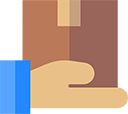Noonan syndrome is a genetic disorder that prevents normal development in various parts of the body. A person can be affected by Noonan syndrome in a wide variety of ways. These include unusual facial characteristics, short stature, heart defects, other physical problems and possible developmental delays.
Noonan syndrome is caused by a genetic mutation and is acquired when a child inherits a copy of an affected gene from a parent (dominant inheritance). It can also occur as a spontaneous mutation, meaning there's no family history involved.
Management of Noonan syndrome focuses on controlling the disorder's symptoms and complications. Growth hormone may be used to treat short stature in some people with Noonan syndrome.
Signs and symptoms of Noonan syndrome vary greatly among individuals and may be mild to severe. Characteristics may be related to the specific gene containing the mutation.
Facial features
Facial appearance is one of the key clinical features that leads to a diagnosis of Noonan syndrome. These features may be more pronounced in infants and young children, but change with age. In adulthood, these distinct features become more subtle.
Features may include the following:
- Eyes are wide-set and down-slanting with droopy lids. Irises are pale blue or green.
- Ears are low-set and rotated backward.
- Nose is depressed at the top, with a wide base and bulbous tip.
- Mouth has a deep groove between the nose and the mouth and wide peaks in the upper lip. The crease that runs from the edge of the nose to the corner of the mouth becomes deeply grooved with age. Teeth may be crooked, the inside roof of the mouth (palate) may be highly arched and the lower jaw may be small.
- Facial features may appear coarse, but appear sharper with age. The face may appear droopy and expressionless.
- Head may appear large with a prominent forehead and a low hairline on the back of the head.
- Skin may appear thin and transparent with age.
Heart disease
Many people with Noonan syndrome are born with some form of heart defect (congenital heart disease), accounting for some of the key signs and symptoms of the disorder. Some heart problems can occur later in life. Some forms of congenital heart disease associated with this disorder include:
- Valve disorders. Pulmonary valve stenosis is a narrowing of the pulmonary valve, the flap of tissue that separates the lower right chamber (ventricle) of the heart from the artery that supplies blood to the lungs (pulmonary artery). It's the most common heart problem seen with Noonan syndrome, and it may occur alone or with other heart defects.
- Thickening of the heart muscle (hypertrophic cardiomyopathy). This is abnormal growth or thickening of the heart muscle that affects some people with Noonan syndrome.
- Other structural defects of the heart. The defects can involve a hole in the wall that separates the two lower chambers of the heart (ventricular septal defect), narrowing of the artery that carries blood to the lungs for oxygen (pulmonary artery stenosis), or narrowing of the major blood vessel (aorta) that carries blood from the heart to the body (aortic coarctation).
- Irregular heart rhythm. This can occur with or without structural heart abnormalities. Irregular heart rhythm occurs in the majority of people with Noonan syndrome.
Growth issues
Noonan syndrome can affect normal growth. Many children with Noonan syndrome don't grow at a normal rate. Issues may include the following:
- Birth weight will likely be normal, but growth slows over time.
- Eating difficulties may result in inadequate nutrition and poor weight gain.
- Growth hormone levels may be insufficient.
- The growth spurt that's usually seen during the teenage years may be delayed. But because this disorder causes bone maturity to be delayed, growth sometimes continues into the late teens.
- By adulthood, some people with Noonan syndrome may have normal height, but short stature is more common.
Musculoskeletal issues
Some common issues can include:
- An unusually shaped chest often with a sunken sternum (pectus excavatum) or raised sternum (pectus carinatum)
- Wide-set nipples
- Short neck, often with extra folds of skin (webbed neck) or prominent neck muscles (trapezius)
- Deformities of the spine
Learning disabilities
Intelligence isn't affected for most people with Noonan syndrome. However, individuals may have:
- An increased risk of learning disabilities and mild intellectual disability
- A wide range of mental, emotional and behavioral issues that are usually mild
- Hearing and vision deficits that may complicate learning
Eye conditions
A common sign of Noonan syndrome is abnormalities of the eyes and eyelids. These may include:
- Problems with the eye muscles, such as cross-eye (strabismus)
- Refractive problems, such as astigmatism, nearsightedness (myopia) or farsightedness (hyperopia)
- Rapid movement of the eyeballs (nystagmus)
- Cataracts
Hearing problems
Noonan syndrome can cause hearing deficits due to nerve issues or to structural abnormalities in the inner ear bones.
Bleeding
Noonan syndrome can cause excessive bleeding and bruising due to clotting defects or having too few platelets.
Lymphatic conditions
Noonan syndrome can cause problems with the lymphatic system, which drains excess fluid from the body and helps fight infection. These problems:
- May show up before or after birth or develop in the teenage years or adulthood
- Can be focused in a particular area of the body or widespread
- Most commonly cause excess fluid (lymphedema) on the back of the hands or top of the feet
Genital and kidney conditions
Many people, especially males, with Noonan syndrome can have problems with the genitals and kidneys.
- Testicles. Undescended testicles (cryptorchidism) are common in males.
- Puberty. Puberty may be delayed in both boys and girls.
- Fertility. Most females develop normal fertility. In males, however, fertility may not develop normally, often because of undescended testicles.
- Kidneys. Kidney problems are generally mild and occur in a fairly small number of people with Noonan syndrome.
Skin conditions
People with Noonan syndrome may have skin conditions, which most commonly are:
- Various problems that affect the color and texture of the skin
- Curly, coarse hair or sparse hair
Noonan syndrome is caused by a genetic mutation. These mutations can occur in multiple genes. Defects in these genes cause the production of proteins that are continually active. Because these genes play a role in the formation of many tissues throughout the body, this constant activation of proteins disrupts the normal process of cell growth and division.
The mutations that cause Noonan syndrome can be:
- Inherited. Children who have one parent with Noonan syndrome who carries the defective gene (autosomal dominant) have a 50 percent chance of developing the disorder.
- Random. Noonan syndrome can develop because of a new mutation in children who don't have a genetic predisposition for the disorder (de novo).
A parent with Noonan syndrome has a 50 percent chance (one chance in two) of passing the defective gene on to his or her child. The child who inherits the defective gene may have fewer or more symptoms than the affected parent.
Complications can arise that may require special attention, including:
- Developmental delays. If your child is affected developmentally, he or she may have difficulty with organization and spatial sense. Sometimes the developmental challenges are significant enough to require a special plan to address your child's learning and educational needs.
- Bleeding and bruising. Sometimes the excessive bleeding common in Noonan syndrome isn't discovered until a person has dental work or surgery and experiences excessive bleeding.
- Lymphatic complications. These usually involve excess fluid that gets stored in various places in the body. Sometimes fluid can collect in the space around the heart and lungs.
- Urinary tract complications. Structural abnormalities in the kidneys may increase the risk of urinary tract infections.
- Fertility issues. Males may have a low sperm count and other fertility problems because of undescended testicles or testicles that don't function properly.
- Increased risk of cancer. There may be an increased risk of developing certain types of cancer, such as leukemia or certain types of tumors.


 Consultation
Consultation Book An Appointment
Book An Appointment Courier your medicine
Courier your medicine Give us a Call
Give us a Call